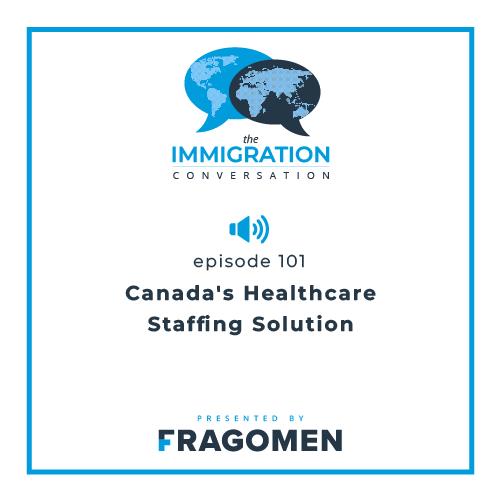Labour Mobility in APAC – New Initiatives to Address barriers and Realize Potential
June 21, 2019

Country / Territory
Related content
Related content
The economic outlook for the Asia Pacific region remains strong and it continues to be the most dynamic of the global economy. Over the medium term, however, economists point to risks, including a tightening of global financial conditions, a shift toward protectionist policies, and an increase in geopolitical tensions.
In order to continue on the trajectory of growth and development, there is a need for policymakers to push ahead with structural reforms to address medium and long-term challenges, such as an aging population and declining productivity growth. Key opportunities also exist in realizing the full benefits of the digital economy.
Over the past two decades, there has been a large increase in the flow of goods, investment and information between APAC nations and although there has been an increase in the movement of people, it has been disproportionate to the rise in economic activity and there remain substantial barriers in the area of labour mobility.
A number of commentators argue that there remains widespread misunderstanding of labour migration in the region and its impacts, both current and potential. However, migration in the region, as is the case elsewhere in the world, represents a highly sensitive issue. Too often restrictive migration policies are based on misinformation and pressure from interest groups rather than on empirical evidence. More needs to be done to increase awareness in the region of the complex relationship between labour mobility and economic and social development.
The APAC region is immense and diverse but characterized by:
- A dynamic economic outlook
- Frequent and fast-changing migration policies often implemented with insufficient engagement and consultation with business
- Migration raising political sensitivity
- Competing policies – growth vs protectionism
- Desire to remain competitive in attracting and retaining global talent
- Changing patterns of work and the disruptive impact of technology
- Aging workforces and slowing productivity; and
- Skills shortages and capacity constraints
Over the past few months, Fragomen’s APAC Government Relations practice has undertaken a comprehensive review of labour mobility within the Asia Pacific region, including facilitating a detailed survey taken from the perspective of corporates operating within the region, and with a particular spotlight on ASEAN.
The analysis emphasizes the key pain points for corporates in the region as protectionist policies, overly bureaucratic processes and red tape, immigration systems that fail to provide sufficient options to support unique but compelling circumstances, the lack of regulatory stability and uncertainty for business with non-transparent and inconsistent decisions.
Over the months ahead, Fragomen will also be partnering with Austcham ASEAN on an initiative to increase dialogue on labour mobility within ASEAN, tacking each of these issues, and looking at ways to influence positive change. We will be looking to work with companies that are facing difficulties in this area with their expansion into ASEAN. The Government Relations team will provide regular updates on this work as it progresses.
For queries on Fragomen Government relations and efforts in APAC, please contact Justin at [email protected] or +61 8 9436 0310.
Country / Territory
Related content
Related content
Explore more at Fragomen

Blog post
The UK expands its High Potential Individual (HPI) visa for 2025, broadening eligibility for global graduates and entrepreneurs while introducing new requirements and application caps

Video
The latest Mobility Minute features Manager Alex Hood discussing recent updates to the UK’s High Potential Individual route, including expanded university eligibility, a new annual cap and modernized governance measures.

Media mentions
Managing Partner for the Middle East and Africa Murtaza Khan discusses how the UAE’s flexible migration policies attract talent and support a competitive labour market.

Media mentions
Senior Counsel Mitch Wexler notes that the US expansion of social-media screening to H-1B and H-4 visa applicants will involve a more detailed review of their online activity.

Media mentions
Partner Edward Raleigh highlights the need for companies to prepare for increased H-1B enforcement and ensure compliance with US worker requirements.

Video
In this Mobility Minute, Associate Rebeca Lafond outlines key considerations for international travel to the United States during the holiday season, including documentation requirements, visa processing expectations and enhanced screening on entry.

Media mentions
Partner K. Edward Raleigh explains that the Department of Labor’s Project Firewall expands H-1B oversight beyond individual complaints and increases the scope of employer compliance reviews.

Media mentions
UK Government Affairs Strategy Director Shuyeb Muquit examines how proposed settlement reforms could reshape the path to UK residency by extending qualifying periods and linking eligibility to individual contribution.

Podcast
Partner Cosmina Morariu and Business Immigration Manager Ayana Ibrahimi discuss critical immigration strategies underpinning healthcare-sector staffing in Canada, unpacking how recent policy, mobility and compliance developments are affecting employers and global talent pipelines.

Awards
Fragomen named Private Client Team of the Year at The British Legal Awards 2025, recognising the strength of our UK Private Client practice.

Media mentions
Partner Daniel Brown highlights rising deceptive practices in immigration and emphasizes stronger verification and compliance measures for employers.

Media mentions
Senior Manager Louise Senior highlights how proposed UK reforms could expand right to work checks across hospitality and reshape compliance for businesses.

Blog post
The UK expands its High Potential Individual (HPI) visa for 2025, broadening eligibility for global graduates and entrepreneurs while introducing new requirements and application caps

Video
The latest Mobility Minute features Manager Alex Hood discussing recent updates to the UK’s High Potential Individual route, including expanded university eligibility, a new annual cap and modernized governance measures.

Media mentions
Managing Partner for the Middle East and Africa Murtaza Khan discusses how the UAE’s flexible migration policies attract talent and support a competitive labour market.

Media mentions
Senior Counsel Mitch Wexler notes that the US expansion of social-media screening to H-1B and H-4 visa applicants will involve a more detailed review of their online activity.

Media mentions
Partner Edward Raleigh highlights the need for companies to prepare for increased H-1B enforcement and ensure compliance with US worker requirements.

Video
In this Mobility Minute, Associate Rebeca Lafond outlines key considerations for international travel to the United States during the holiday season, including documentation requirements, visa processing expectations and enhanced screening on entry.

Media mentions
Partner K. Edward Raleigh explains that the Department of Labor’s Project Firewall expands H-1B oversight beyond individual complaints and increases the scope of employer compliance reviews.

Media mentions
UK Government Affairs Strategy Director Shuyeb Muquit examines how proposed settlement reforms could reshape the path to UK residency by extending qualifying periods and linking eligibility to individual contribution.

Podcast
Partner Cosmina Morariu and Business Immigration Manager Ayana Ibrahimi discuss critical immigration strategies underpinning healthcare-sector staffing in Canada, unpacking how recent policy, mobility and compliance developments are affecting employers and global talent pipelines.

Awards
Fragomen named Private Client Team of the Year at The British Legal Awards 2025, recognising the strength of our UK Private Client practice.

Media mentions
Partner Daniel Brown highlights rising deceptive practices in immigration and emphasizes stronger verification and compliance measures for employers.

Media mentions
Senior Manager Louise Senior highlights how proposed UK reforms could expand right to work checks across hospitality and reshape compliance for businesses.

